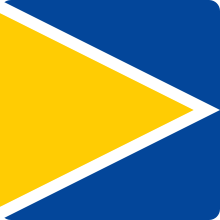
Back Transmission voie-machine Catalan Transmission Voie-Machine German Transmission voie-machine Spanish Transmission voie-machine French Transmission Voie-Machine Hungarian Transmission Voie-Machine Japanese TVM (철도 신호) Korean Transmission voie-machine LB Transmission Voie-Machine Dutch Transmission Voie-Machine Polish
- This article was originally based on material from TGVweb, which is licensed under the GFDL.

Transmission Voie-Machine (TVM, English: track-to-train transmission) is a form of in-cab signalling originally deployed in France and is mainly used on high-speed railway lines. TVM-300 was the first version, followed by TVM-430.
TVM-300 was developed in the 1970s as part of the TGV project. At speeds faster than 220 kilometres per hour, TGV trains only run along dedicated tracks designated as lignes à grande vitesse (LGV). When travelling at high speed, it is not possible for the driver to accurately see colour-light railway signals at the side of the track. Signalling information is instead transmitted to the train and displayed on the train driver's dashboard. The driver is shown the safe operating speed, measured in kilometres per hour.
The 1980s-developed TVM-430 system provides more information than traditional signalling systems would allow, including track gradient profiles and information about the state of signalling blocks further ahead. This high degree of automation does not remove the train from driver control, although there are special safety mechanisms that can safely bring the train to a stop in the event of driver error.